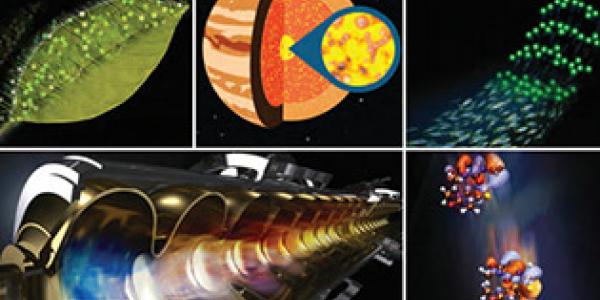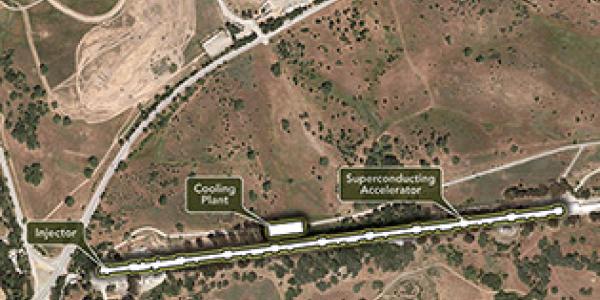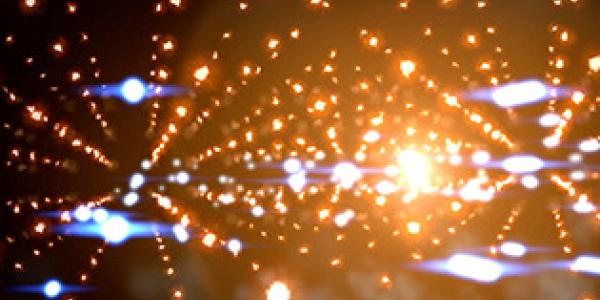LCLS-II Science

The scientific community has identified six areas among the research topics where the unique capabilities of LCLS-II will be essential for further scientific progress.
See document:
New Science Opportunities Enabled by LCLS-II X-ray Lasers
Nanoscale Materials Dynamics, Heterogeneity and Fluctuations
The properties of functional materials are often defined by interfaces, heterogeneity, imperfections and fluctuations of charge and/or atomic structure. Models of ideal materials often break down when trying to describe the properties that arise from these complex non-equilibrium conditions.
Ultrashort X-ray pulses from LCLS-II will provide element-specific snapshots of materials dynamics to characterize transient non-equilibrium and meta-stable phases.
Programmable trains of soft X-ray pulses at high rep rate will characterize spontaneous fluctuations and heterogeneities at the nanoscale across many decades of time, while coherent hard X-ray scattering will provide unprecedented spatial resolution of material structure, its evolution and relationship to functionality under operating conditions.
Fundamental Dynamics of Energy and Charge
Charge migration, redistribution and localization even in simple molecules are not well understood at the quantum level, and these processes are central to complex processes like photosynthesis, catalysis and bond formation/dissolution that govern all chemical reactions. Indirect evidence points to the importance of quantum coherences and coupled evolution of electronic and nuclear wave functions in many molecular systems.
However, it hasn't been possible to directly observe these processes to date, and they are beyond the description of conventional chemistry models. High-repetition-rate soft X-rays from LCLS-II will enable new techniques that will directly map charge distributions and reaction dynamics at the scale of molecules. New nonlinear X-ray spectroscopies offer the potential to map quantum coherences in an element-specific way for the first time.
Catalysis and Photocatalysis
LCLS-II will reveal the critical (and often rare) transient events in these multi-step processes, from light harvesting, to charge separation, to charge migration and subsequent accumulation at catalytically active sites. Time-resolved, high-sensitivity, element-specific spectroscopy enabled by LCLS-II will provide the first direct view of charge dynamics and chemical processes at interfaces, will characterize the subtle conformational changes associated with charge accumulation, and will capture rare chemical events in operating catalytic systems across multiple time and length scales.Understanding catalysis and photocatalysis is essential for designing new systems for chemical transformation and solar energy conversion that are efficient, chemically selective, robust and based on earth-abundant elements.
The unique LCLS-II capability for simultaneous delivery of hard and soft X-ray pulses opens the possibility to follow chemical dynamics (via spectroscopy) concurrent with structural dynamics (substrate scattering) during heterogeneous catalysis.
Emergent Phenomena in Quantum Materials
In order to advance current electronic technology, we need to understand and ultimately control the exotic properties of new materials - ranging from superconductivity to ferroelectricity to magnetism. These properties emerge from the correlated interactions of the constituent matter components of charge, spin and phonons, and are not well described by conventional band models that underpin present semiconductor technologies.
Fully coherent X-rays from LCLS-II will enable new high-resolution spectroscopy techniques that will map the collective excitations that define these new materials in unprecedented detail. Ultrashort X-ray pulses and optical fields will facilitate new coherent light-matter methods for manipulating charge, spin and phonon modes to both advance our fundamental understanding and point the way to new approaches for materials control.
Revealing Biological Function in Real Time
Biological function is profoundly influenced by dynamic changes in protein conformations and by interactions with molecules and other complexes – processes that span a broad range of timescales. Among many examples, these biological dynamics are central to the function of enzymes, cell membrane proteins and the macromolecular machines responsible for transcription, translation and splicing. Modern X-ray crystallography has transformed the field of structural biology by routinely resolving simple macromolecules at the atomic scale.
LCLS has already demonstrated a major advance in this area by resolving the structures of macromolecules that were previously inaccessible - using the new approaches of serial nanocrystallography and diffract-before-destroy with high-peak-power X-ray pulses. The high repetition rate of LCLS-II portends another major advance by revealing biological function through its unique capability to follow the dynamics of macromolecules and interacting complexes in real time and in native environments. Advanced solution scattering and coherent imaging techniques will characterize, at the sub-nanometer scale, the conformational dynamics of heterogeneous ensembles of macromolecules – both spontaneous fluctuations of isolated complexes, and conformational changes that may be initiated by the presence of specific molecules, environmental changes, or by other stimuli.
The unique LCLS-II capability for generating two-color hard X-ray pulses will enable entirely new phasing schemes for nanocrystallography, and will resolve atomic-scale structural dynamics of biochemical processes that are often the first step leading to larger-scale protein motions.
Matter in Extreme Environments
Unpredictable material phases and properties also emerge under extreme conditions of temperature, pressure and applied fields. Understanding the behavior of matter under these extreme conditions is essential to improve the function of materials in extreme environments such as those required for fusion energy, and to advance our understanding of planets and stars in the universe.
The capability of LCLS-II for generating soft and hard X-ray pulses simultaneously will enable the creation and observation of extreme conditions that are far beyond our present reach. Penetrating hard X-ray pulses will allow the unique characterization of unknown structural phases. The unprecedented spatial and temporal resolution will enable direct comparison with theoretical models relevant for inertial-confinement fusion and planetary science.
Further Information
This document attempts to capture the most compelling new science opportunities that are enabled by the new LCLS-II X-ray lasers.

This document provides an overview of how the science opportunities are being translated into facility development activities.

New instruments will leverage the high repetition rate of the LCLS-II FEL source and address the LCLS-II Scientific Opportunities.

